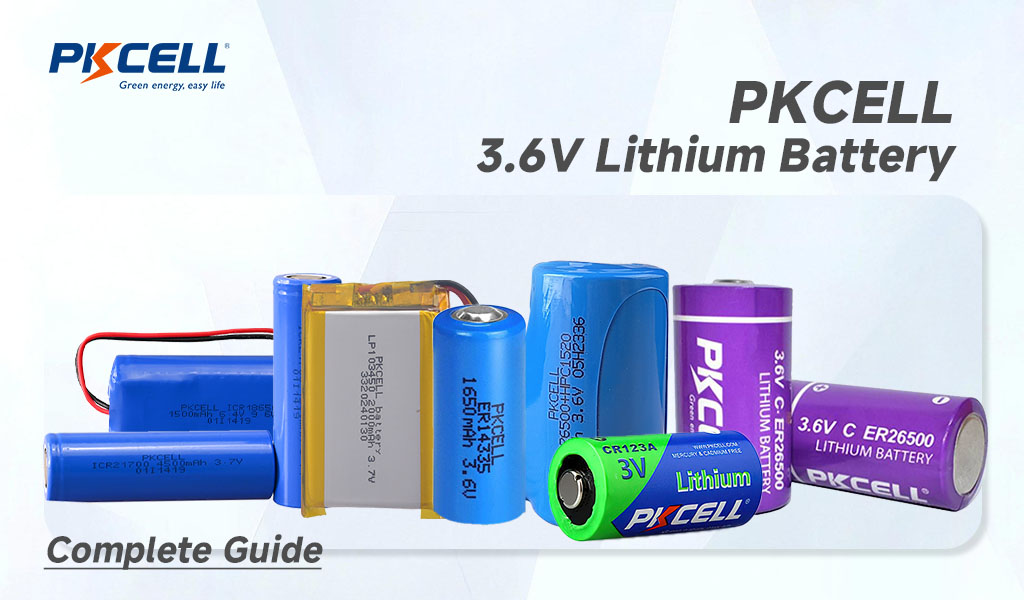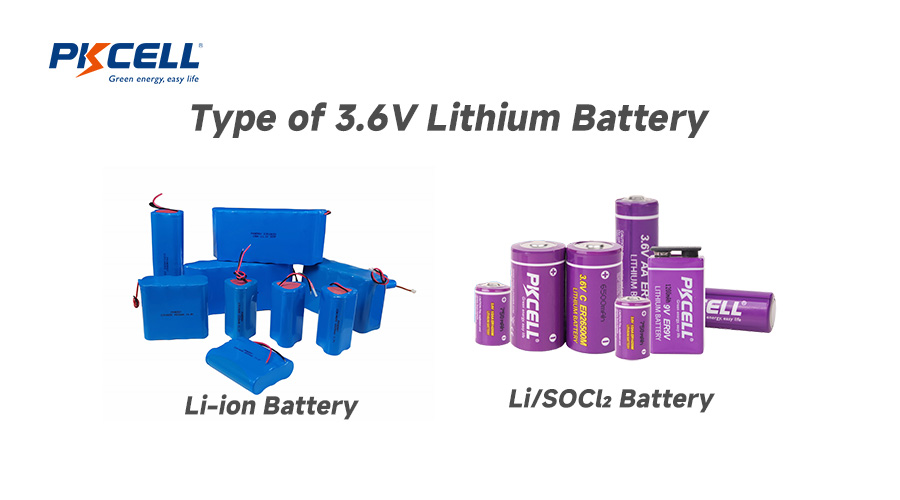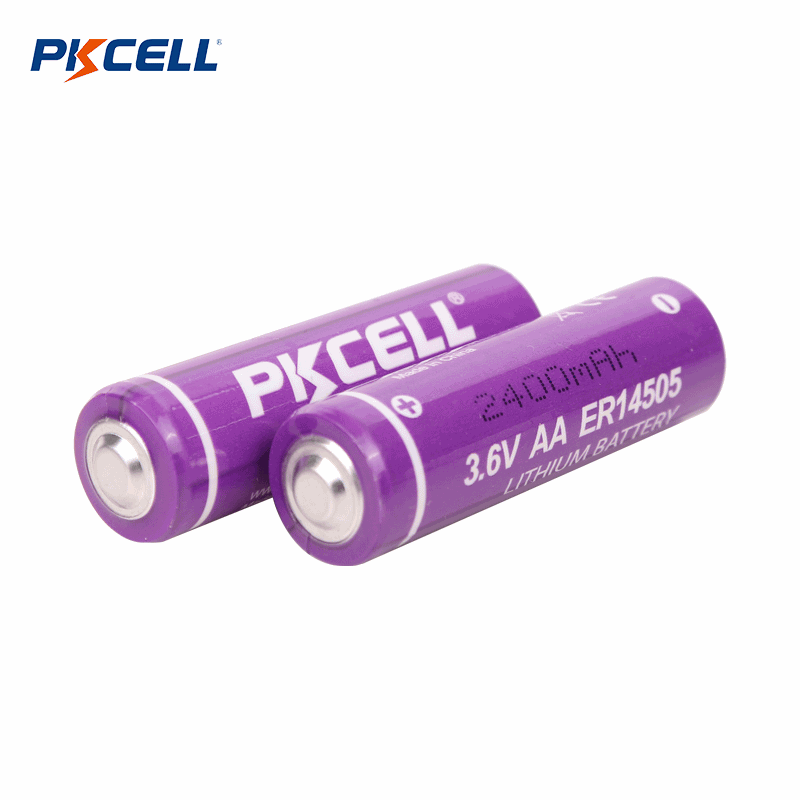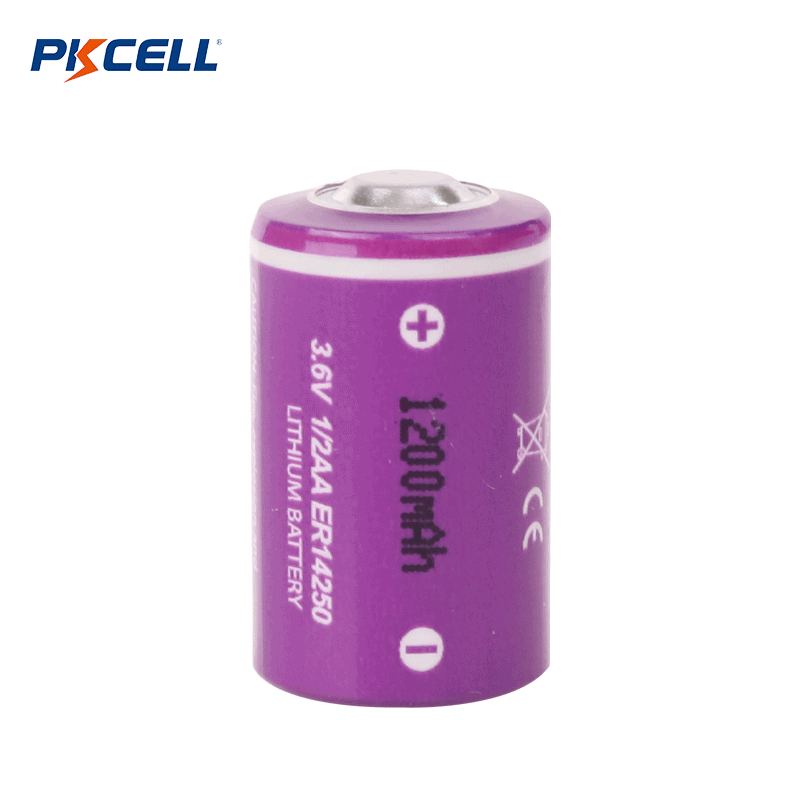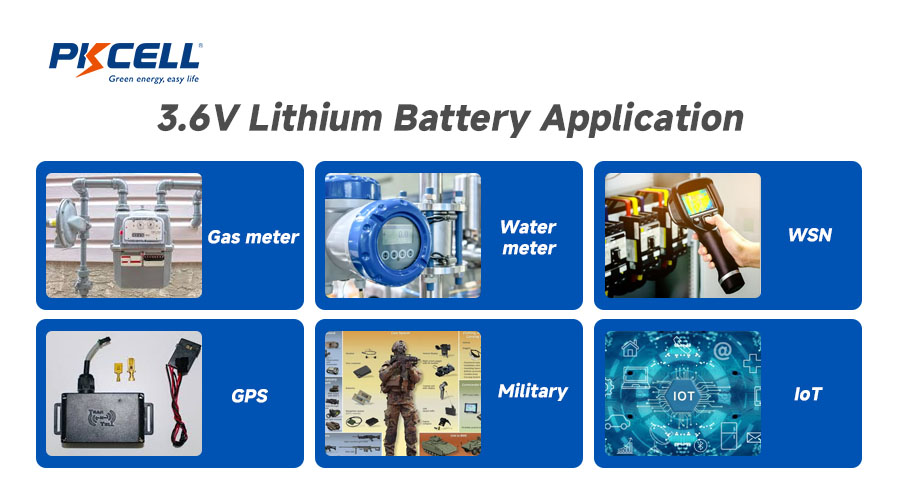Belangrijkste hoogtepunten
- 3,6V-lithium-batterijen omvatten lithiumthionylchloride, Li-ion en andere varianten die speciaal voor specifieke doeleinden zijn ontworpen.
- Populaire voorbeelden zoals de varianten 18650, ER26500 en AA zijn voor uiteenlopende doeleinden te gebruiken.
- Ze bieden een hoge energiedichtheid, waardoor ze ideaal zijn voor compacte, maar krachtige toepassingen.
- Ze zijn geschikt voor een breed scala aan industrieën, waaronder de lucht- en ruimtevaart, de medische sector, het IoT en militaire toepassingen.
- Dankzij de lange levensduur en lage zelfontlading zijn deze batterijen betrouwbaar voor kritische toepassingen.
Inleiding: Wat zijn 3,6 volt lithiumbatterijen?
Een 3,6V lithiumbatterij is klein en gemakkelijk te gebruiken voor het opslaan van energie. Hij levert betrouwbaar vermogen en een hoge energie-inhoud in een klein formaat. Deze batterijen maken gebruik van lithium, waardoor ze een lange levensduur hebben en lang energie kunnen leveren zonder snel leeg te raken. Ze zijn verkrijgbaar in verschillende maten en vormen en worden gebruikt in veel draagbare apparaten, industriële gereedschappen en speciale meetapparatuur. In sommige gevallen gebruiken ze lithiumthionylchloride om nog betere resultaten te behalen in zeer zware omstandigheden. Daarom gebruiken zoveel mensen lithiumthionylchloride voor energie.
Soorten 3,6V lithiumbatterijen
Er zijn veel soorten 3,6V-lithiumbatterijen voor verschillende toepassingen, en dit laat zien hoe flexibel ze kunnen zijn. De belangrijkste groepen zijn:lithium-ionbatterijen, lithium-ijzerdisulfidebatterijenEnlithiumthionylchloridebatterijen.
- Lithium-ionbatterijen staan bekend om hun hoge energie en goede energiedichtheid. Daarom worden ze vaak gebruikt in apparaten zoals telefoons en tablets.
- LiFeS₂-batterijen staan bekend om hun lichte gewicht, lange houdbaarheid en uitstekende prestaties bij extreme temperaturen. Ze worden vaak gebruikt in consumentenapparaten met een hoog stroomverbruik, zoals digitale camera's en zaklampen.
- Lithium-thionylchloridebatterijen gaan lang mee als ze op de plank liggen en zijn zeer betrouwbaar. Mensen gebruiken ze voor dingen die jarenlang een constante stroomvoorziening nodig hebben.
Batterijtype
Grootte (mm) Capaciteit (mAh) Lithium-ion Verschilt 1000 – 5000 LiFeS₂ 26 x 32 1500 – 3000 Lithiumthionylchloride 20 x 32 1200 – 3000
Belangrijkste kenmerken en voordelen
3,6V lithiumbatterijen bieden verschillende belangrijke eigenschappen en voordelen die ze zeer gewild maken voor diverse toepassingen. Hier zijn enkele van hun opvallende eigenschappen:
- Uitzonderlijke energiedichtheid:Deze batterijen kunnen een aanzienlijke hoeveelheid energie opslaan in een compact formaat.
- Breed spanningsbereikGebruikers kunnen vertrouwen op stabiele en consistente stroomvoorziening voor uiteenlopende behoeften.
- Lange ladingbehoud:Ze behouden hun lading gedurende langere perioden, waardoor ze minder vaak hoeven te worden opgeladen.
- Ideaal voor incidenteel gebruik: Ideaal voor apparaten die niet dagelijks worden opgeladen, omdat ze langer meegaan zonder dat ze leeglopen.
- Veelzijdige toepassingen: Geschikt voor zowel persoonlijk als industrieel gebruik, werkt effectief in diverse machines en gereedschappen.
Deze combinatie van veelzijdigheid en hoge energiedichtheid maakt lithiumbatterijen een uitstekende keuze voor talloze toepassingen.
Veelvoorkomende modellen en vergelijking: LiSoCl2, Li-ion en meer
3,6V AA-lithiumbatterij:
De 3,6V AA-lithiumbatterij is een veelgebruikte keuze voor industriële en IoT-toepassingen vanwege het compacte formaat en de betrouwbare prestaties. Twee van de meest gebruikte AA-modellen zijn:
- ER14505: Deze batterij is gebaseerd op Li-SOCl₂ (lithiumthionylchloride) en biedt een hoge energiedichtheid, een lange houdbaarheid (tot 10 jaar) en uitstekende prestaties bij extreme temperaturen. Ideaal voor slimme meters, draadloze sensoren en medische trackingapparatuur.
- LS14500:Dit model, geproduceerd door merken zoals Saft, is ook een Li-SOCl₂-cel met vergelijkbare specificaties als de ER14505, maar kan enigszins afwijken in ontladingscurve en interne weerstand. Het wordt veel gebruikt in systemen voor bewaking op afstand en beveiligingsapparatuur.
3.6V 18650 lithiumbatterij:
De 18650 3,6V lithiumbatterij is een oplaadbare cel die doorgaans is gebaseerd op Li-ion (lithium-ion)-chemie. Bekend om zijn hoge energiedichtheid, stabiele prestaties en oplaadbaarheid, wordt hij veel gebruikt in:
- Elektrisch gereedschap
- E-bikes en elektrische voertuigen
- Laptopbatterijen
- Zaklampen en fakkels
Vergeleken met primaire batterijen zoals ER14505 zijn 18650-cellen ontworpen voor herhaalde cycli, maar worden ze doorgaans niet gebruikt in apparaten met een ultralaag vermogen vanwege de zelfontladingssnelheid.
Andere populaire 3,6V lithium-batterijen:
- ER26500: Dit is een 3,6V lithiumbatterij van formaat C, eveneens gebaseerd op Li-SOCl₂-chemie. Met een grote capaciteit (tot 8500 mAh) levert hij langdurig vermogen voor industriële sensoren, asset tracking-systemen en apparatuur voor olie- en gasmonitoring. Hij is ontworpen voor toepassingen met een laag stroomverbruik en een lange levensduur.
- ER14250 (1/2AA): Een Li-SOCl₂-cel met een kleinere vormfactor, die betrouwbare stroom levert in krappe ruimtes. Deze wordt vaak gebruikt in medische apparaten, realtimeklokken (RTC's) en compacte beveiligingsmodules.
er14505 versus ls14500:
De ER14505 maakt gebruik van lithiumthionylchloride. Dit geeft een hogere energiedichtheid en een langere levensduur. Dit maakt het een goede keuze voor apparaten die niet veel stroom verbruiken, maar altijd betrouwbare stroom nodig hebben. De LS14500 daarentegen is gemaakt met lithiummangaandioxide. Deze is iets goedkoper en levert krachtige stroom voor apparaten die iets meer energie nodig hebben, maar niet het meest. Mensen moeten op deze punten letten bij het kiezen van een batterij. Zo kunnen ze de batterij vinden die het beste werkt in hun apparaat. Het helpt hen om het maximale uit hun apparaat te halen met het juiste type lithiumbatterij.
| Batterijtype | Grootte (mm) | Capaciteit (mAh) |
|---|---|---|
| Lithium-ion | Verschilt | 1000 – 5000 |
| LiFeS₂ | 26 x 32 | 1500 – 3000 |
| Lithiumthionylchloride | 20 x 32 | 1200 – 3000 |
Industriële toepassingen van 3,6V lithiumbatterijen
AMR/AMI slimme water- en gasmeters:
Slimme water- en gasmeters gebruiken 3,6V lithiumbatterijen om de manier waarop mensen nutsvoorzieningen beheren te veranderen. Deze meters maken gebruik van cellen met een hoge energiedichtheid. Dit zorgt voor betrouwbare stroomvoorziening, waardoor geavanceerde meetsystemen zoals AMI en AMR beter werken. Ze maken ook constante monitoring mogelijk en zorgen ervoor dat gegevens te allen tijde worden verzonden. Dit betekent meer nauwkeurigheid en een betere benutting van de tijd.
Draadloze sensornetwerken (WSN):
Draadloze sensornetwerken (WSN) gebruiken 3,6V lithiumbatterijen voor betrouwbare stroomvoorziening. Deze batterijen hebben een hoog energieniveau en hun energiedichtheid zorgt ervoor dat de netwerken langdurig werken, zelfs op afgelegen locaties. Omdat de batterijen lithiumthionylchloride gebruiken, kunnen ze temperatuurschommelingen en andere lastige omgevingsomstandigheden aan. Het helpt WSN ook om beter data te verzamelen.
GPS-trackers, Militair, Olie & Gas, IoT:
Betrouwbare stroom is erg belangrijk voor bijvoorbeeld gps-trackers, het leger en de olie- en gasindustrie. De hoge energie in 3,6V-lithiumbatterijen zorgt ervoor dat deze apparaten goed blijven werken, zelfs onder zware omstandigheden. Voor IoT-apparaten zorgen deze batterijen voor een constante energievoorziening, zodat de apparaten verbonden blijven en probleemloos gegevens kunnen verzenden. Hun hoge energiedichtheid en betrouwbare stroomvoorziening maken ze onmisbaar in veel verschillende sectoren.
Waar kan ik hoogwaardige 3,6V lithiumbatterijen kopen?
Het vinden van goede 3,6V lithiumbatterijen is erg belangrijk als u betrouwbare stroom en de beste resultaten wilt in veel soorten apparaten. PKCell is een leverancier die mensen vertrouwen. Ze bieden u veel keuze en hebben batterijen met een hoge energiedichtheid. U vindt wat u nodig hebt opPKCellVoor uw GPS-trackers, sensoren en vele andere toepassingen. Onze lithium-thionylchloridebatterijen zijn gemaakt om goed te presteren. Heeft u nog vragen of hulp nodig bij het kiezen van batterijen? Neem dan gerust contact met ons op.Neem contact met ons op en vraag om een consult!
Conclusie
Kortom, 3,6V lithiumbatterijen zijn erg belangrijk voor veel industriële toepassingen. Ze onderscheiden zich door hun sterke prestaties en constante output. Er is een ruime keuze, zoals de LiSoCl2- en Li-ion-modellen. Deze omvatten modellen zoals de 18650 en ER26500. Door u hier meer over te informeren, kunt u bepalen wat u nodig hebt voor uw klus. U vindt deze batterijen in slimme watermeters, gps-trackers en andere moderne apparaten. Ze maken echt een groot verschil in de hedendaagse technologie. Zorg er bij het zoeken naar batterijen voor dat u batterijen van goede kwaliteit kiest, zodat u de beste resultaten krijgt. Wilt u meer weten of lithiumbatterijen kopen? Neem dan contact op metvertrouwde leveranciers.
Veelgestelde vragen
Hoe lang gaat een 3,6V-lithiumbatterij doorgaans mee?
De levensduur van een 3,6V lithiumbatterij hangt af van hoe u hem gebruikt en onderhoudt. De meeste lithiumbatterijen gaan ongeveer 300 tot 500 laadcycli mee. Als u de lithiumbatterij op de juiste manier bewaart en de oplaadtips opvolgt, gaat de batterij langer mee. Dit zorgt voor jarenlang betrouwbare stroom.
Kan een 3,6V-batterij vervangen worden door een 3,7V- of 3V-batterij?
In de meeste gevallen kunt u een 3,7V- of 3V-batterij gebruiken in plaats van een 3,6V-batterij. Controleer echter eerst of de batterij wel geschikt is voor uw apparaat. Sommige gadgets werken mogelijk niet goed vanwege de verschillende voltages. Dit kan problemen veroorzaken of het apparaat zelfs kapot maken. Bekijk altijd de instructies of specificaties van het apparaat voordat u een nieuwe batterij aanschaft.
Zijn 3,6V lithiumbatterijen oplaadbaar?
Het hangt ervan af welke batterij je koopt. Sommige 3,6V lithiumbatterijen, zoals Li-ion, kunnen worden opgeladen en opnieuw worden gebruikt. Deze hebben een goede energiedichtheid. Andere, zoals de lithium-thionylchloride-batterij, zijn niet gemaakt om opnieuw te worden opgeladen, maar leveren wel langdurig stabiel vermogen wanneer je dat het meest nodig hebt. Kijk altijd op het productetiket om meer te weten te komen over wat je koopt.
Zijn er veiligheidsrisico's verbonden aan het gebruik van een 3,6V-lithiumbatterij?
Ja, er zijn veiligheidsrisico's verbonden aan 3,6V-lithiumbatterijen. Ze kunnen risico's opleveren zoals oververhitting, explosie of brand bij onjuist gebruik. Het is cruciaal om compatibele laders te gebruiken en overladen te voorkomen. Bovendien helpt het bewaren ervan op een koele, droge plaats degradatie te voorkomen en zorgt het voor veilig gebruik. Volg altijd de richtlijnen van de fabrikant.
Plaatsingstijd: 18 juni 2025


